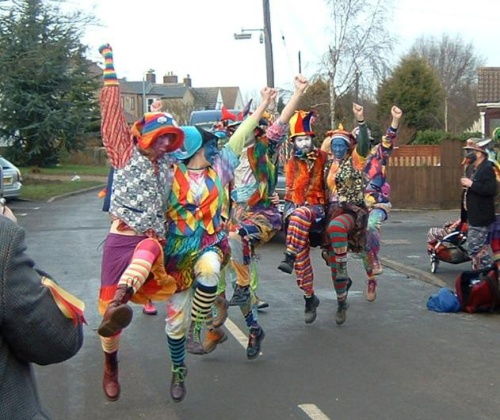In 18th-century East Anglia, agricultural workers often performed in the streets disguised in blackface and women’s clothing in exchange for largesse; this practice became known as Molly dancing. The dancers, who were often drunk, disreputable, and destructive, were regarded as degenerate by preservationists, and the practice died out in the 1930s.
Four decades later an expansion of the English folk revival fostered an interest in obscure traditions, and a resurrection of Molly dancing ensued. Its new incarnation is marked by a completely different cultural context, improved status of the dancers, and an emphasis on creativity.
This according to “Molly dancing: A study of discontinuity and change” by Elaine Bradtke, an essay included in Step change: New views on traditional dance (London: Francis Boutle, 2001, pp. 60–85). Above, Gog Magog Molly; below, the Ouse Washes Molly Dancers.
Related articles:




Pingback: Knutsford Royal May Day | Bibliolore
Pingback: Linked sword dances | Bibliolore
Nice Post..
Pingback: English dance & song | Bibliolore
Pingback: Coco-nut intellectual property | Bibliolore